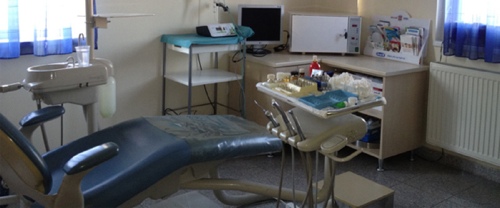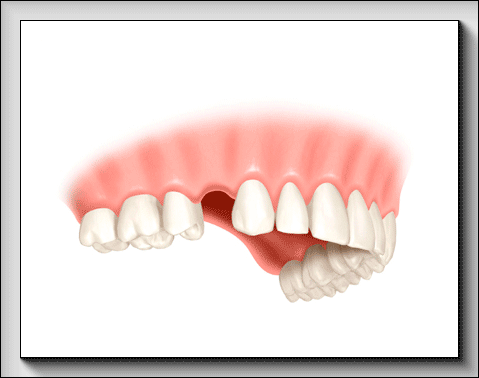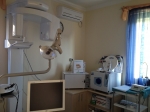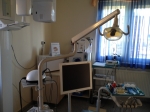Ihde dental system
How are Dr. Ihde Dental implant systems different?
Nowadays, the majority of patients are aware of dental implant. We mean the replacement of a teeth lost in accidents or due to a desease by positioning an artificial titanium tooth root (a screw-shaped device) into the patient’s jawbone. Although this modern technology for replacing missing teeth has been existed for more than 40 years now, it has undergone changes in the past few years. Owing partly to internet, we may find more and more information on the topic, only to realise how rapidly the number of dental practitioners and clinics that offer dental implants grows.

As a result of more than 50 years of experience and a patient-centered attitude at Dr Ihde Dental, we are able to offer 99% of the patients a temporary fixed denture from day 1 of the treatment, and, subsequently, within 3-6 days a permanent denture.
Sooner or later we all have to face it when our dentist announces he or she can no longer save a tooth and it has to be removed. Many may have already experienced that and live with a missing tooth, or multiple missing teeth, or wear removable dentures or partial dentures (prosthetic teeth). This condition may come about at any age, not necessarily when one gets older, many dental practitioners have 20-30 year-old patients with missing teeth. So, the question arises, how is it possible to replace missing teeth?
Today, advances in medical science and dentistry have reached a level that makes dental implant (artificial tooth root) treatment to replace missing teeth a safe, routine procedure. According to the majority of dental practitioners who perform the treatment, the risks involved in the procedure need not be more than those involved with tooth extraction. Still, when their dentist mentions dental implants, many people visualize a time-consuming and expensive procedure – yet that is not necessarily the case either.
The method described below is applicable for the vast majority of patients but applicability is always carefully tested by the dental practitioner. Prior to treatment a dental panoramic x-ray image or ct-scan is enough, along with a procedure treatment plan designed by an expert, usually the dental practitioner.
Implant Supported Dentures: a Painless Solution within a Week – KOS, BCS
Minimally invasive implant surgery (or ’flapless’ implant surgery, a technical term) has been used in dentistry for over 25 years and it is a painless method causing no bleeding either. In essence, instead of creating a few incisions in the patient’s gums, the surgeon uses a circular punch to create a circular hole for the titanium bolt (artificial tooth root) in the patient’s gum tissue and the implant is screwed into the jawbone (e.g. Dr. Ihde Dental – KOS). Local anaesthetics are administered to the patient, and, in our experience, in the majority of cases once the effects of the anaesthetics have passed, no additional pain medication is necessary.
So, if you were worried that if you finally decide to get your teeth fixed, you would be forced to take several days or even weeks of sick leave, or that you would have to endure long-lasting pain, you can relax now. In the case of bigger gaps or dentures (4 or more units, or a full bridge), not even one or more teeth with non-treatable abcess, that is, teeth, which cannot be saved, present an obstacle in the way of implant placement.
Our specially designed dental implants (Dr. Ihde Dental – BCS) can be placed into position immediately after tooth extraction and can form units with other type of implants (Dr. Ihde Dental – KOS or BOI), or with other teeth that allow it. The result is a stable construction, which can be safely loaded immediately by our professional experts and which satisfies high aesthetic standards.
In general, it may be claimed about dental implants that apart from ensuring better chewing ability and a more beautiful appearance, they also enhance the quality of life and self-confidence of patients, and promote the patient’s general psychological and emotional well-being as well.
How is it possible for patients to receive their final dentures straight after implant placement?
The treatment area and amount of bone necessary must be carefully determined for screw implants used by the majority of dental practitioners. Under the leadership of our Swiss headquarters we have been developing and testing various separately applicable techniques for more than 15 years now. These techniques can be combined and currently 99% of the patients undergo implant placement and receive a temporary denture on the same day, and the final denture can be fixed within 3-6 days.
The gums on the side of the jaw are examined under local anaesthesia. This is followed by a vertical and a horizontal incision in the bone, where the implant is positioned. BOI® implants are inserted transosseally, that is, their base plates reach the outer and inner part of the cortical (hard, dense) part of the bone. In order to hold a BOI® implant in place (e.g. during osseointegration), screws are used. Immediately after the operation an impression of the teeth is taken, the patient can try the framework the following day and 2-3 days after the operation the patient receives the temporary denture (for 6 months), which is virtually identical to the final denture.
Basically, implants are stabilized by a prosthetic superstructure (e.g. a bridge). In order for an implant placement procedure to be called a success, it is necessary to have a thorough knowledge of the bone tissue and chewing pressure, and to undergo prosthetic treatment as soon as possible (within 72 hours).
The Procedure Step-by-Step:
- Taking a panoramic X-ray image, a CT-scan if necessary, and a careful examination of the oral cavity, dental specialists assess the situation and decide on a treatment plan which is optimal for you with your consent
- On the basis of the treatment plan a detailed offer is drafted, containing the exact number and location of implants and the costs involved
- In order to prepare the oral cavity for the procedure you receive a dental hygiene treatment
- Depending on how sensitive you are, you receive the appropriate amount of anaesthetic to avoid the pain during the procedure
- We install the implants previously designed and consented by you
- The gum is stitched back over the implant and you receive the necessary medication
- The implant is left to heal and integrate and you receive a temporary denture to allow you to return to your normal social life during the healing period
- After the surgery a dental impression is prepared on the basis of which the dental laboratory fabricates a replica of the framework of the final denture
- The fit of the framework is checked to ensure it is perfectly convenient for you
- If the framework fits, the dental technician prepares the final denture, which can undergo the stress of chewing and can successfully fulfill its aesthetic function
- Since there may be changes in the gum contour, we advice that six month later change the temporary denture to a metal-ceramic or a zirconium-ceramic one.

Should you have any further questions, we are happy to discuss them in person, and on that occasion you also receive a treatment plan. In order to book an appointment with us, please contact us.

















